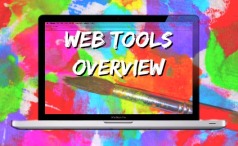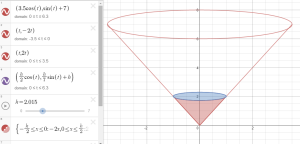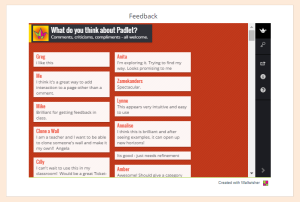 Create 2.1.1 – Web Tools
Create 2.1.1 – Web Tools
“But, in my view, computers will not live up to their potential until we start to think of them less like televisions and more like paintbrushes. That is, we need to start seeing computers not simply as information machines, but also as a new medium for creative design and expression.”
“Computer as Paintbrush: Technology, Play, and the Creative Society” Mitchel Resnick
Virtual classroom teachers have an advantage over cinder block teachers when it comes to conceptualizing the computer as not just a resource but also as a tool. In the absence of pencil and paper, students must use the computer to create and publish work, not only as a conduit for information, as if often the case in many physical classrooms. Throughout our TOOL journey I have shared many instructional websites and sources, and now I want to introduce three categories of sites that facilitate creation and creativity.Research/Study Tools
The first category includes resources that help students deepen their learning by creating an experience or by allowing them to create study content. Simulations and 3D models help students see real examples of the abstract concepts they’re learning. For example, Desmos’ graphing calculator lets students see how changes in a mathematical expression change the graph. With PhET’s interactive science simulations, students can conduct an experiment before or after learning the scientific theory behind it. Also, many zoos offer animal cameras that give students a chance to observe many different animals without going to the zoo. Students could even compare observations from other zoos to see how the different climates and enclosures affect animal behavior. The other half of the research/study tools category are tools students use to create their own study materials. Quizlet.com allows students to make flashcards and then play games and take quizzes based on those words.
Presentation Tools
Teachers are probably most familiar with tools from the second category: presentation tools. While these tools take many forms, their main function is presenting information about a topic. Some resemble PowerPoint, such as Prezi, while others resemble the classic poster, like www.smore.com. Additional tools such as GoAnimate and PowToons let students use animation to tell a story, but Make Belief Comix’s story board is just as effective in a 2D format. Finally, there are many tools for creating infographics; I recommend Piktochart.
Student Discussion Tools
Students can also use tools that facilitate discussion. These can be as simple as Padlet, which offers users a blank background to post comments, but there are also numerous blogging sites to use. Since this post addresses tools for an online class, a learning management system will offer the best tool to facilitate student discussions, and it should be used. Wikispaces gives students a chance to not only discuss but also lets students organize and present information and projects. Finally, there are a handful of charts and graphic organizers that facilitate planning and collaboration among users. MindMeister creates mind maps and tracks changes from the different users and might be an app for teachers to explore. However, Google Drive offers the best set of tools for accountable collaboration since it tracks changes made to all of its documents, spreadsheets, presentations, and pictures.
Although teachers are aware of the many tools available for students to create, students may not be aware of their options, so it is important to offer a variety of dependable tools. Mitchel Resnick compares the computer to a paintbrush to help students create, but as technology continues to advance, computers are less like paintbrushes and more like Swiss Army Knives that offer many tools to fulfill a variety of tasks.



Pingback: GAVS – Web Tools for Assessment | Kinetic ED